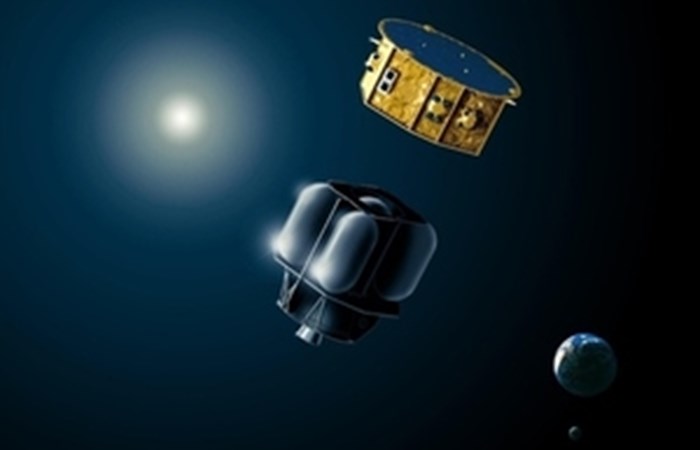UK Space Agency

The UK-led spacecraft will help to open up a completely new observational window into the gravitational Universe, by testing new technologies needed to measure gravitational waves in space. Predicted by Albert Einstein, these waves are ripples in the curvature of spacetime produced by massive celestial events, such as the merging of black holes.
The UKs involvement in LISA Pathfinders technology demonstration payload and the operational phase of the mission is funded by the UK Space Agency and was formerly funded by the Science and Technology Facilities Council (STFC). Airbus Defence and Space is the prime contractor for the mission, having built the spacecraft, as well as being the LISA Test Package (LTP) architect, on behalf of ESA and the participating Member States. SciSys UK Ltd developed the satellites on-board software and UK scientists from the University of Birmingham, the University of Glasgow and Imperial College London designed and built elements of the innovative and complex LTP. STFC RAL Space was involved in several technology development projects in the early stages of the mission in 2001.
Dr Chris Castelli, Director of Programmes at the UK Space Agency, said:
LISA Pathfinder is one of the most unique European space missions to date, requiring engineering that has never been done before. Were immensely proud that this challenging mission to discover the unseen part of our Universe was built here in the UK.
Andy Stroomer, Head of Earth Observation, Navigation and Science at Airbus Defence and Space in the UK, added:
Todays launch is a great success for the Airbus teams from Stevenage and across Europe; and an inspiration for our next generation of engineers - thanks very much to all those who worked so hard to make this possible.
At the core of LISA Pathfinder is a pair of identical 46 mm goldplatinum cubes separated by 38 cm, which will be isolated from all external and internal forces acting on them except one: gravity.
The mission will put these cubes in the purest free-fall ever produced in space and monitor their relative positions to astonishing precision, laying the foundations for gravitational wave observatories in space.
The spacecraft lifted off at 04:04 GMT on a Vega rocket. About seven minutes later, after separation of the first three stages, the first ignition of Vegas upper stage propelled LISA Pathfinder into a low orbit, followed by another ignition about one hour and forty minutes into the flight. Separation from the upper stage took place at 05:49 GMT. Controllers at ESAs operations centre in Darmstadt, Germany then established control.
Over the next two weeks, the spacecraft itself will raise the orbits highest point in six critical burns.The final burn will propel the spacecraft towards its operational location, orbiting around a stable virtual point in space called L1, some 1.5 million kilometres from Earth towards the Sun.
LISA Pathfinder is expected to reach its operational orbit about 10 weeks after launch, in mid-February. After final checks, it will begin its six-month scientific mission on 1 March.
En route to the final orbit, the two cubes will be released from the locking mechanisms that hold them during launch and cruise. Once in orbit around L1, the final mechanisms will be unlocked and the cubes will no longer be in mechanical contact with the spacecraft.
A complex system of laser beams bouncing between the two cubes will measure how close to true free-fall they are to within a billionth of a millimetre never previously achieved in space.
Among the anticipated sources of gravitational waves are supernova explosions and double black holes. These objects are thought to be associated with overwhelmingly powerful events. For example, the energy released in gravitational waves during the last few minutes of the merging of just one pair of supermassive black holes is comparable to the total energy emitted as light by all stars and galaxies across the cosmos over the same time. Detecting gravitational waves would also be an additional confirmation of General Relativity.
Scientists are also looking forward to discovering even more, unexpected cosmic sources once they are able to listen to the Universe on this new channel.
